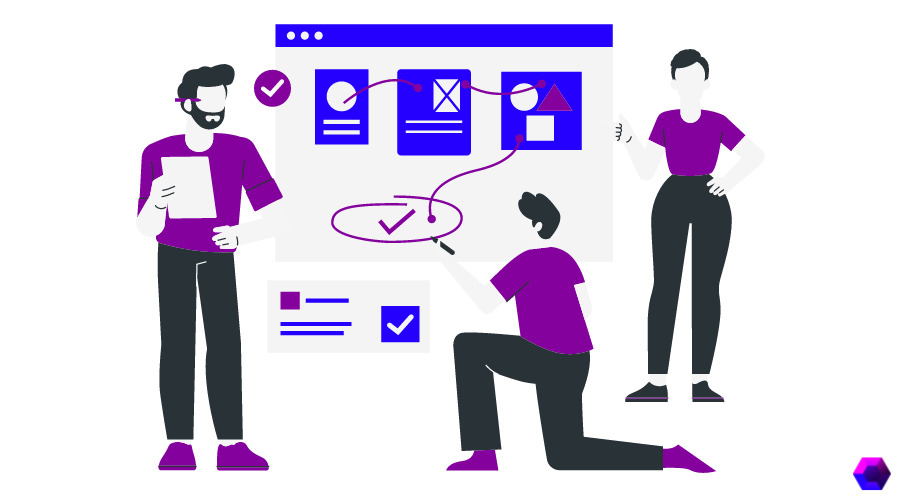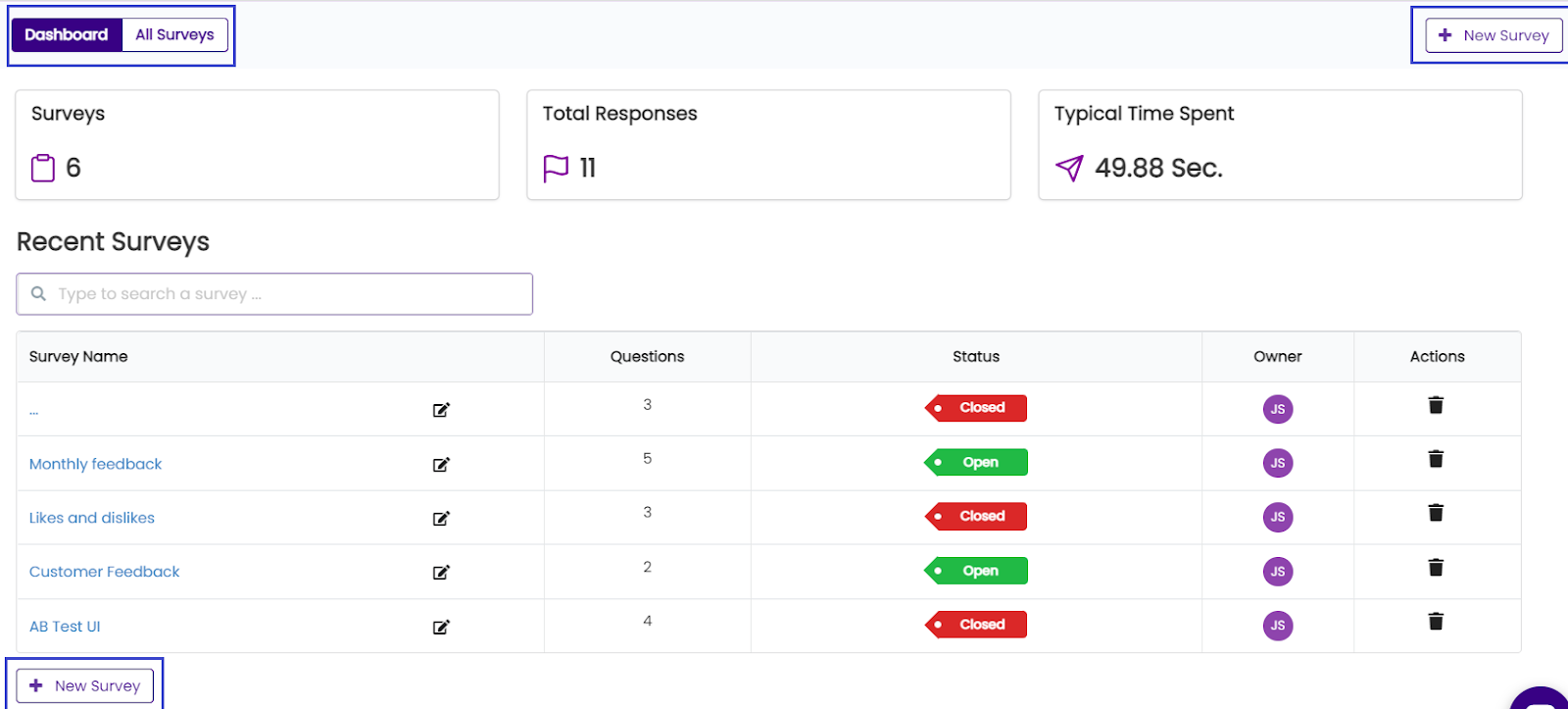
What Is a Prototype?
A prototype is an unfinished version of any product used for user testing. A prototype must incorporate all the features and functions of the final product but without the final design elements.
Although it is unfinished, it should appear to the user as a finished product to garner honest feedback.
The primary purpose of testing any prototype is to ensure that the design remains intuitive and engaging for the audience.
Prototypes enable the companies to assess the product’s value, proposition, and quality before its final launch.
What Is Prototyping?
Prototyping is the stage of design thinking and sprints that usually follows after ideation. It is an experimental process and model where teams bring ideas into reality.
Prototype product development is a complex and intricate process, but it is essential to the success of any new product.
The ideation process will be efficient if you could just save all the ideas in one place, isn’t it?
What better approach to improve your product, right?
Prototyping Definition
“Prototyping is an essential step in product development. Target customers give feedback to organizations, and they make changes before the final launch. Hence, a prototype must be adaptable.”
The teams then check these prototypes and see if they match users’ product needs.
What Are the Benefits of Prototyping?
- Prototyping tools help find black holes in the product design before launching it.
- Prototyping makes it easier for you to confirm or disprove the hypotheses.
- It helps in getting access to early feedback from your customers.
Top product management software like Chisel has a user research pillar that lets you obtain insightful customer feedback with various features.
Why wait? Sign up for free today!

- Saves time and money on building products fully.
- Convince stakeholders with accurate data gathered from users during prototyping.
What Are the Stages of Prototyping?
Prototype product development is the process of taking a product from initial conception to marketable form. It includes market research, product design, prototyping, testing, production, and packaging. prototype product development is a key part of bringing a new product to market and is often one of the most difficult and expensive stages of the process.
There are a number of factors to consider during the prototype development process, such as function, form, manufacturability, and cost.
Stages of prototype development:
Set a Clear Objective for the Prototype
It is necessary to set a vision in a sketch or verbal description. You will have to answer the following questions:
- What market are you targeting?
- What problem will your prototype solve?
- What are the resources and labor required to build the prototype?
- Have we explored other options for problem-solving?
- What are the prices?
Also, the prototype of the product must be designed to meet the needs of the customer and the requirements of the market. It must also be able to be manufactured at a reasonable cost.
Include Only Selected Features
Remember not to build your prototype precisely like the final product. Focus on only a few features in the prototype. You can look at other features later on unless they focus on prototyping.
Building Prototype
Once you consider the above two pointers, teams can build the prototype. Some of the prototyping methods you can use are CNC machining, 3D printing, casting, and power bed fusions.
Testing
After developing the prototype, the developer must go through the entire process. It is necessary to check options, evaluate the design, and make the changes before presenting them to stakeholders. Regular testing and updating are essential.
The Presentation
The final stage in prototyping is to present the prototype to:
- Consumers
- Investors
- Send for patenting
The presentation stage will help you know if the product needs to be mass-produced or used on a small scale.
What Are Data-Driven Prototyping Tools?
Some of the Prototyping Tools That You Can Use To Build Successful Prototypes Are:
- Invision
- Webflow
- Axure
- Sketch
- Adobe XD
- Justinmind
Why Is Prototyping Important for Product Teams?
For any type of product prototyping, digital or physical, prototyping can yield invaluable results that any product team can otherwise be hard to detect.
Firstly, it encourages the product team to view the idea differently by transforming it into a more realized form than just a concept.
Something may seem reasonable on paper but may not seem as relevant and valuable when it becomes a reality.
Next, introducing the prototype to different types of users brings a new perspective into the development process.
Prototyping can also help companies save money in the long run. By prototyping a product, companies can identify any potential problems with the design before mass production. This can help avoid costly mistakes and delays further down the road.
Finally, by soliciting feedback from customers during the prototyping stage, companies can make changes to the design that will result in a better final product. This depicts the importance of prototyping.
That’s because the participants have not seen the product in its development stages beforehand. Hence, they could provide valuable insights that the team may have overlooked.
The participants are not biased and view the product objectively rather than from the perspective of someone who has spent months working on it.
Furthermore, they can flag even the most minute flaws in the product design or any other inconvenience that could impact the product’s overall usability and user experience.
Product teams may overlook these basic details or even underestimate the potential harm they can cause to the product.
No matter what method you choose, developing a successful product is a crucial step; that is why prototyping is important.
Thus, prototyping helps the teams dive deeper into users’ expectations. A product management system can help you in the process of prototyping. Hence, make sure you invest in the best one that fits your bill.
What Are the Types of Prototyping?
Sketching
The simplest form of a prototype is sketching.
Designers can pick up a sheet of paper and start roughing their ideas. Ideally, this should represent the core functions and features of the product.
That is the best approach to introducing your idea to the investors and other stakeholders.
Paper Prototype
Another more advanced form of sketching is a paper prototype.
These clarify how all the product’s elements work together to provide a fruitful and engaging user experience. These are essential for outlining the core structure and navigation of digital products.
Low-fidelity Prototype
Basic wireframe models, useful for testing the flow and design, are low-fidelity prototypes. That’s where you can accurately locate any functionality issues and change them accordingly.
High Fidelity Prototype
On the other hand, a high-fidelity prototype closely resembles the product’s final design and functionalities. However, remember that it is without the final finishing touches.
A high-fidelity prototype represents the product’s final form and performance, though it is without the final finishing touches.
Live Data Prototypes
Nowadays, companies use live data prototypes for more advanced testing. They use analytics to determine the product’s success or failure.
You may be interested in:
- What is Rapid Prototyping?
- Using research to build a MVP
- What Is Proof of Concept? Definition, Meaning & Examples
- How to use UX to craft better products?
- Enterprise Feedback Management: What is it & Best Software?
- Customer Feedback Loop: How to Create & Close it?
- 9 Best Feedback Management Software in 2022
FAQs
Rapid prototyping is a strategy agile teams employ throughout the product development process. Using this approach, you can create three-dimensional prototypes of a product. Subsequently, you test these prototypes to optimize superficial characteristics such as shape, size, overall usability, etc.
Fail fast approach helps developers cut losses, test extensively, and determine the value of an idea. This technique also guides to pivot with the idea that isn’t working. That is why you must use the fast-fail process to build successful prototypes.
Following are the stages of prototyping while testing:
- Get clear on what exactly you want to test
- Build the prototype
- Select the best bracket of target customers to test (e.g., students, working individuals)
- Select user testing tools (online testing etc.)
- Set a clear objective for the prototype. What do you hope to achieve from the prototype testing?
- Ask the right questions before, during, and after the test to the users
- Launch the prototype test
- Get insights from customers. And share them with the team and create a better and more valuable product.
